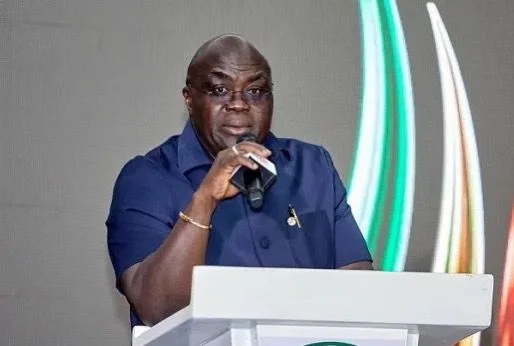Navigating AI, Layoffs, And Tight Budgets: How Millennial Media Entrepreneurs Are Surviving
By Contributor,Jasmine Browley
Copyright forbes

For many millennial media founders, the current industry climate is both a gauntlet and an opportunity. Newsroom layoffs, shrinking ad revenue, and the rise of AI-generated content are forcing independent entrepreneurs to reimagine how journalism is produced, funded, and sustained. In 2024, more than 25,000 job losses occurred in the U.S. media industry, and the trend is expected to continue into 2025, driven by factors like inflation, generative AI, and economic uncertainty that led to budget cuts at major companies like Warner Bros. Discovery, Hearst Magazines, and CNN.
Two Black women on the frontlines of this transformation, Dontaira Terrell, 40, who recently acquired The Buckeye Review, and Tasha McCaskiel, founder of Black Girls In Media—are leading the charge with equal parts grit and ingenuity.
Reviving Legacy Journalism
Founded in 1937, The Buckeye Review is one of the oldest Black newspapers in the Midwest. Terrell and her sister Zakkiyyah Terrell White, finalized their acquisition of the paper in January 2024, officially announcing it later in the spring. For Terrell, who manages editorial strategy and visibility initiatives while her sister oversees legal and business operations, the purchase was about more than just preserving history—it was about creating new possibilities for the next generation.
Zakkiyyah Terrell White, Dontaira Terrell
Zakkiyyah Terrell White, Dontaira Terrell
“This was an opportunity to take a legacy publication that’s been a cornerstone in our community for nearly 90 years and ensure it continues to thrive,” Terrell tells me. “We want to tell the stories that often get overlooked, while also building innovative revenue streams that make the paper sustainable for years to come.”
Dontaira Terrell
Dontaira Terrell
MORE FOR YOU
That has meant experimenting with membership models, branded content, and partnerships with local businesses. “AI isn’t a threat if we leverage it correctly,” Terrell adds. “It’s about using the technology to free up our team’s time for high-impact, human storytelling.”
Lessons From Growing Too Fast
McCaskiel, 33, whose platform Black Girls in Media has grown to nearly 200,000 members since launching in 2018, knows firsthand the financial tightrope that comes with scaling a media brand. After hosting two successful in-person conferences in Atlanta and New York, she made the difficult decision to pause the event series this year due to mounting costs.
Tasha McCaskiel
Tasha McCaskiel
“I had to learn the difference between having faith and being realistic,” McCaskiel says. “I used to think, ‘God will make a way,’ and while He has, I realized I also needed to know my numbers and be more strategic. Now, I only plan events once sponsorship money is secured upfront, instead of building them on hopes and wishes.”
The decision to take a break was deeply personal.
“I carried so much shame after the last conference,” she admits. “People saw me on a big stage, but behind the scenes, I was drowning in invoices. I had to rewrite my own story and say, ‘You are a great founder. You just need to take a break, learn from this, and come back stronger’.”
Her transparency was met with an outpouring of support from her audience. “The feedback was freeing,” McCaskiel says. “People told me, ‘We’ll be here when you come back.’ That gave me the space to breathe, close loose ends, and think critically about how to scale without sacrificing financial stability.”
Most recently she hosted an intimate gathering in Chicago in partnership with Jim Beam. Although McCaskiel says she’s scaled back some, she leaned on her relationships to still execute thoughtful, immersive experiences. For instance, she said that because of support of Amanda Haynes, Jim Bean’s Global Brand Public Relations Director, the event was able to happen.
Black Girls In Media Dinner, Chicago
Tyris Photography
“It’s a great depiction of how, despite brands cutting budgets at the moment, it’s key for Black women who have corporate titles to push for their own,” McCaskiel tells me.
Black Girls in Media Dinner, Chicago
Tyris Photography
The State of Media Entrepreneurship
Both Terrell and McCaskiel agree that capital access is the greatest challenge facing media founders today. “Our community supports us, but to sustain and to scale, you need money—partnerships, investors, capital,” McCaskiel stresses. “We’re doing great work, but we need systemic support to match our impact.”
McCaskiel has diversified her revenue streams through a membership program, job board postings, and digital events—a model other entrepreneurs are beginning to replicate. “It started as a group chat,” she recalls, “but everyone kept adding their friends, and it grew so fast. Now we offer monthly events, industry discounts, and job opportunities. That membership model is what helps us keep the lights on.”
Terrell echoes that diversification is key for survival.
“Legacy media can’t just rely on print subscriptions anymore,” she says. “We’re building a hybrid model that mixes community journalism, digital products, and events so that we aren’t dependent on just one stream of income.”
A New Blueprint for Media’s Future
Despite economic headwinds and shifting algorithms, both women remain optimistic about the future of independent media. “Black women are the culture,” McCaskiel says. “Even in the face of layoffs and economic challenges, we continue to create, to innovate, to lead. My hope is that the infrastructure catches up to our brilliance.”
For Terrell, the mission is clear: “We’re not just keeping The Buckeye Review alive; we’re evolving it. AI and technology can help us work smarter, but it’s our commitment to community storytelling that will carry us forward.”
Editorial StandardsReprints & Permissions



